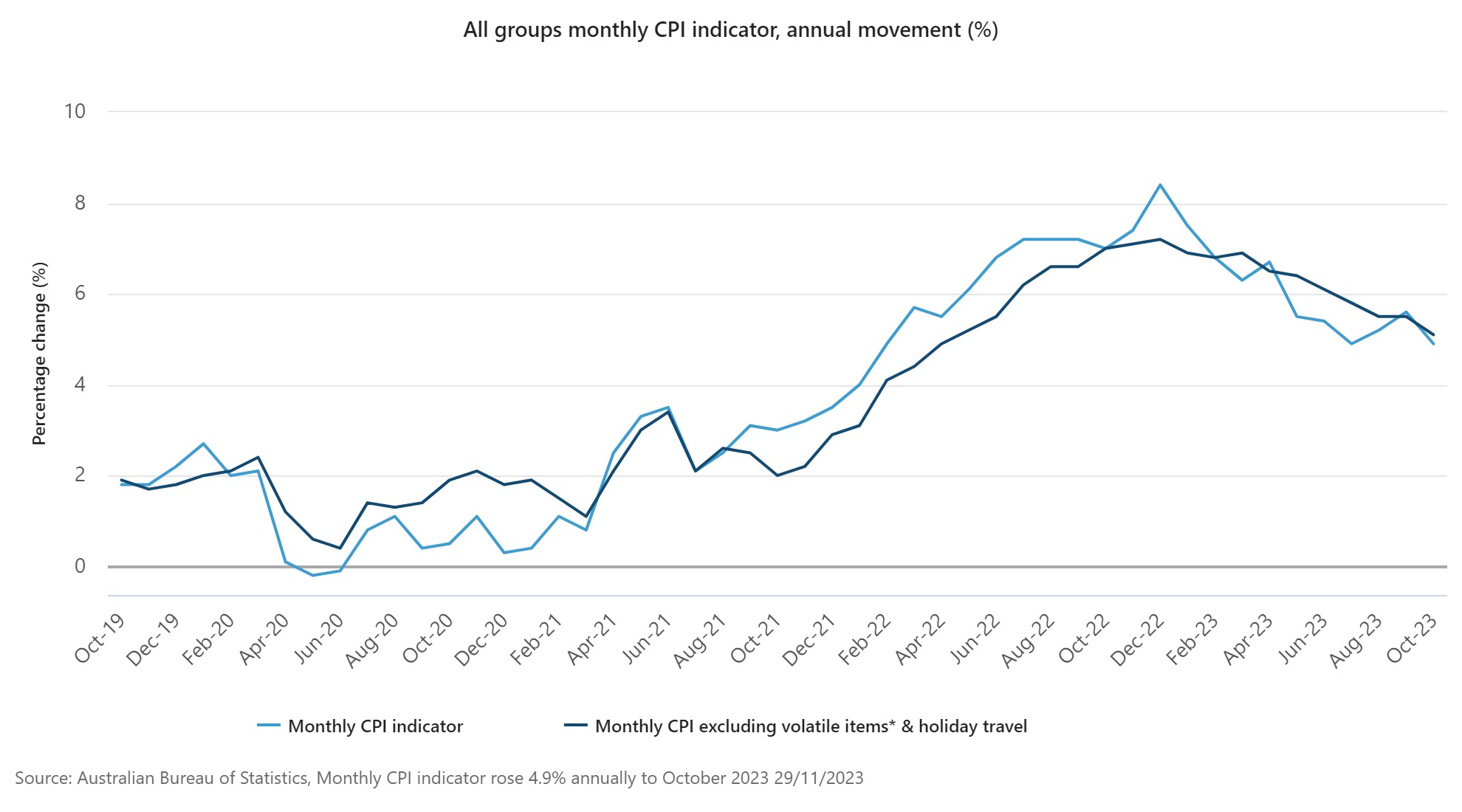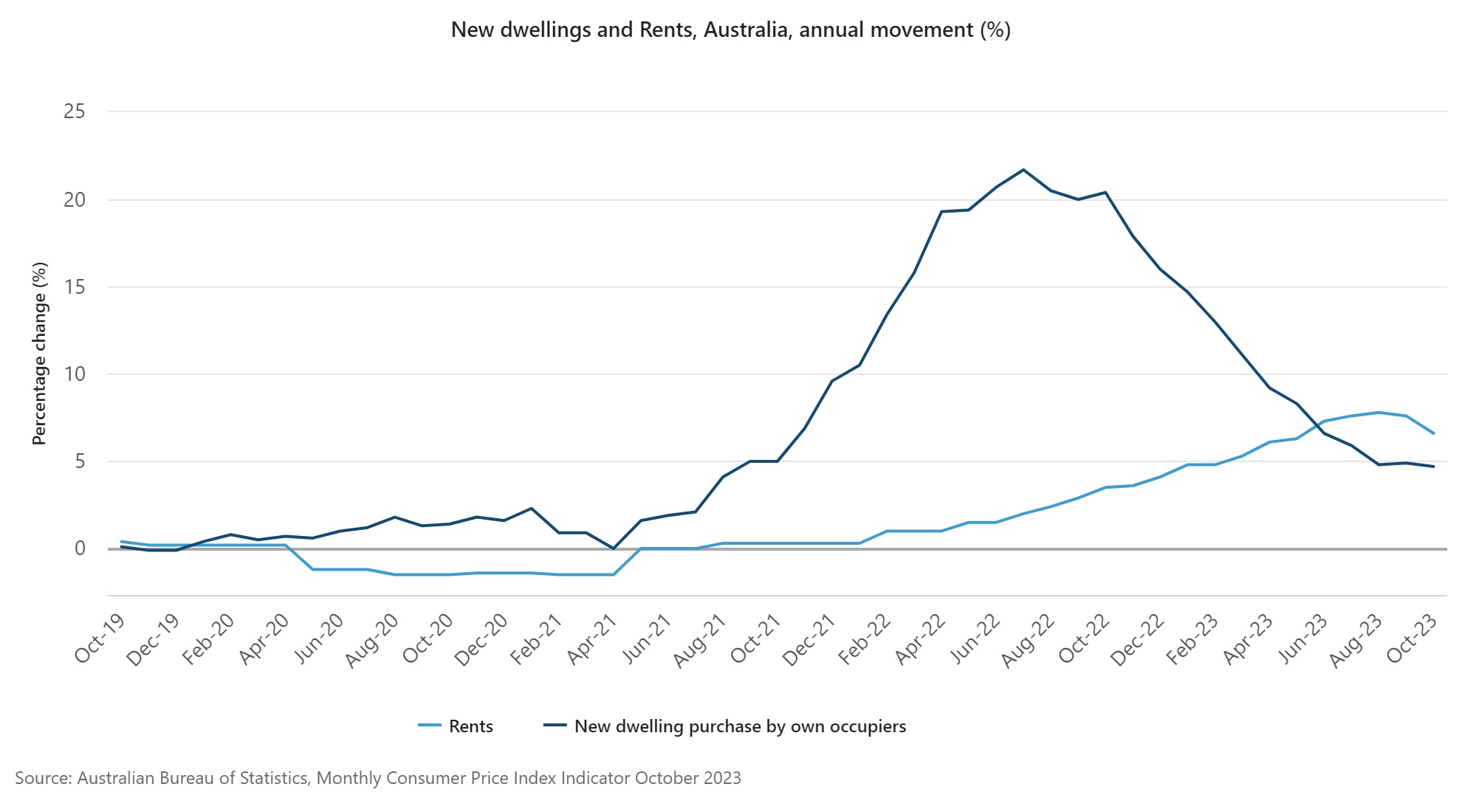

The monthly Consumer Price Index (CPI) indicator rose 4.9% in the 12 months to October 2023, according to the latest data from the Australian Bureau of Statistics (ABS).
The 4.9% increase is down from 5.6% in September and below the peak of 8.4% in December 2022.
The most significant contributors to the October annual increase were Housing (+6.1%), Food and non-alcoholic beverages (+5.3%) and Transport (+5.9%).
Adele Andrews (pictured above), director of brokerage Australian Property Home Loans, said the figures came as welcome news.
“Hopefully, this will now be enough for the RBA to hold rates for next month and give us a little Christmas reprieve,” Andrews said.
“With a further reprieve in January, given that they won't meet that month it would be nice to think we can enjoy a couple of months without any interest rate doom and gloom.”
When excluding volatile items from the monthly CPI indicator, the annual rise in October is 5.1%, lower than the annual rise of 5.5% in September, according to Leigh Merrington (pictured above), acting ABS head of prices statistics.
"CPI inflation is often impacted by items with volatile price changes like Automotive fuel, Fruit and vegetables, and Holiday travel. It can be helpful to exclude these items from the headline CPI to provide a view of underlying inflation,” Merrington said.

The annual increase for Housing of 6.1% was also lower than the 7.2% increase in September.
New dwelling prices rose 4.7%, which is the lowest annual rise since August 2021, as building material price increases continued to ease reflecting improved supply conditions.
Rent prices rose 6.6% in the 12 months to October, due to low vacancy rates and a tight rental market.
“The annual increase in Rents is lower than the rise of 7.6% in September largely due to the increase in Commonwealth Rent Assistance that took effect from 20 September 2023 and reduces rents for eligible tenants,” Merrington said.
“Excluding the changes to rent assistance, Rents would have increased 8.3% in the 12 months to October.”

Electricity prices rose 10.1% in the 12 months to October reflecting increases in wholesale prices from annual price reviews in July 2023.
These electricity price rises have been partly offset by the introduction of the Energy Bill Relief Fund rebates for eligible households from July.
“Electricity prices have risen 8.4% since June 2023. Excluding the rebates, Electricity prices would have increased 18.8% over this period,” Merrington said.
Automotive fuel prices were 8.6% higher in October compared to 12 months ago, due to higher global oil prices. This is down from the annual increase of 19.7% in September.
"The reinstatement of the full fuel excise tax to 46 cents per litre on 30 September 2022 contributed to the annual increase to September 2023 but not to October 2023. This, combined with a monthly fall of 2.9%, has reduced the annual rise for Automotive fuel," Merrington said.
Food and non-alcoholic beverages rose 5.3% in the 12 months to October, up from the 4.7% annual increase in September.
“While annual inflation continues to ease across most food categories, Fruit and vegetable prices are higher this month compared to 12 months ago, driven by price rises for melons and bananas,” Merrington said.
